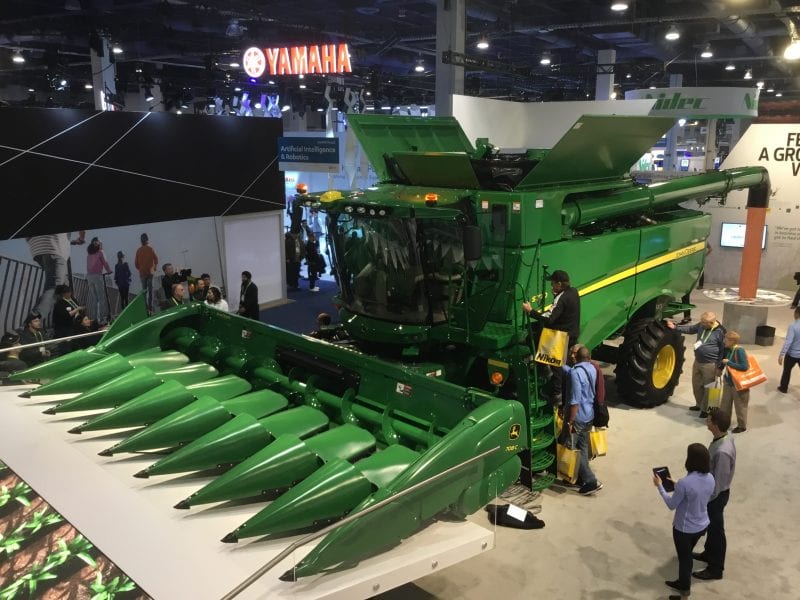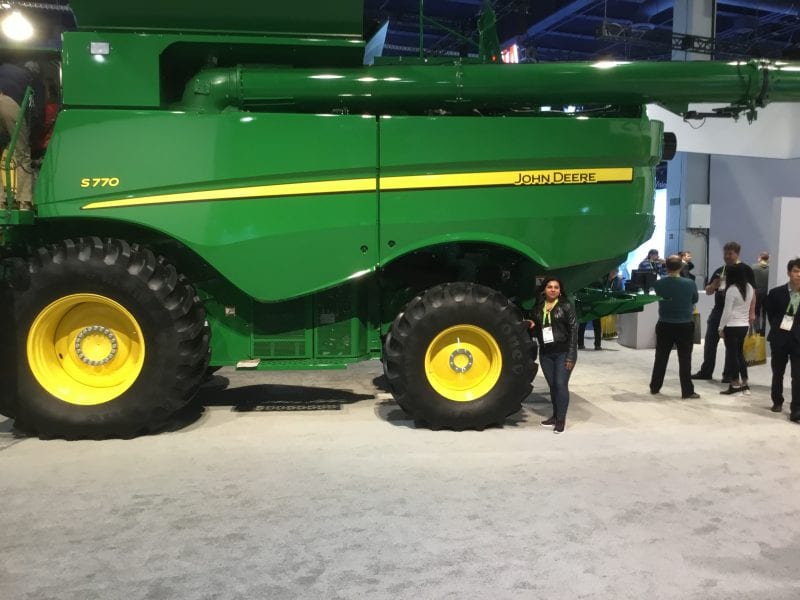21st CENTURY FARMING: John Deere is at CES; the showpiece at their booth is a giant semi-autonomous combine:
That’s to say, in order to build a fully autonomous tractor, there are no shortcuts. While a blend of GPS and other location tracking sensors, image sensors, and telematics assist John Deere vehicles to navigate fields today, the company still can’t truly replicate everything a human would see and feel sitting in the tractor cab. The company’s latest commercially-available machine with autonomous features, the S700 combine (a vehicle which harvests grain), can automatically adjust its harvesting equipment based on the condition of the crop it sees—but still gives the farmer sitting in the tractor a camera on the process to make sure it’s happening correctly. Right now all of John Deere’s tractors still require a human to sit inside—a sign that autonomy is a long road even in controlled environments.
Automakers and their partners in Silicon Valley chasing the dream of self-driving cars are similarly learning that there’s a lot more to driving than just seeing the road and minding the cars around you.
* * * * * * * *
Both pursuits have their challenges. John Deere doesn’t need to contend with hundreds of other vehicles on its path, but a collision with other equipment or a misadjusted piece of equipment could mean disaster for an entire season. Cars and trucks carry precious cargo—humans—but benefit from signs, lines, and established infrastructure to help guide cars on the correct paths.
You can get a sense of the size of this beast by the people standing next to it and climbing onboard.


